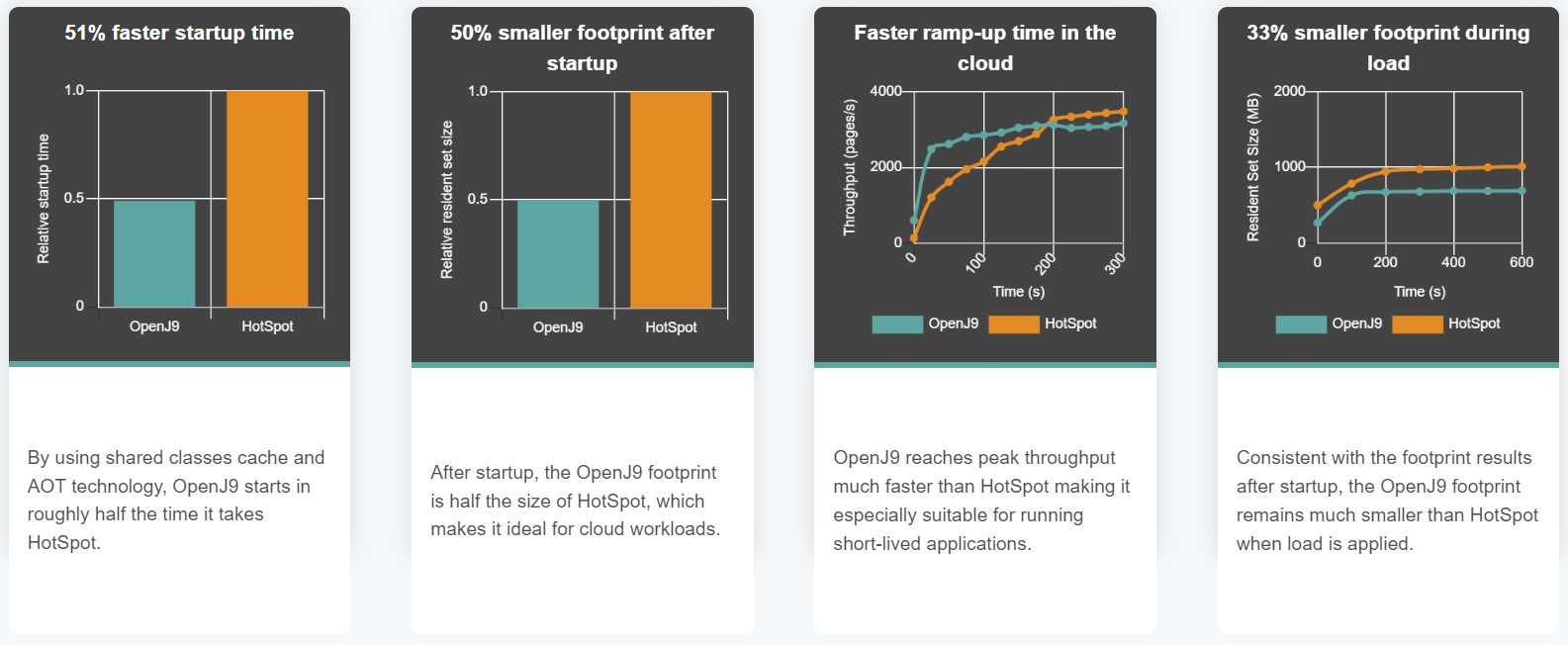 See all blog posts
See all blog posts
Open Liberty and Semeru Runtimes, cloud-native performance that matters
Open Liberty and IBM Semeru Runtimes are perfectly matched to get the cloud native experience developers expect out of a modern runtime stack, including the best performance and throughput. These two technologies were developed to help you get the most out of your Java applications, no matter where those applications are running.
Cloud-native development fundamentally changes the way software developers design and build applications. Open Liberty and IBM Semeru Runtimes have fully embraced this approach to create some of the best performing technologies in this space. In this post, I’ll explain why these two technologies are a great solution for your cloud-native needs and provide some performance data to back up my claims!
About OpenJ9 and Semeru Runtimes
OpenJ9, the JVM that the IBM Semeru Runtimes JDK is based on, is robust because IBM customers have been using it for the past 25 years. It was given to the Open-source community (Eclipse Foundation) and has since gone through some major changes that make it a great option for your cloud-native Java applications.
This JVM has some great performance characteristics that enable you to get the most out of your Java applications. It can scale from small to large and has some of the best throughput statistics of any JVM. It also provides functions, such as class cache sharing and remote JIT servers, that help your applications perform to the highest standards. For specific performance data on the OpenJ9 JVM, check out this article with testimonies of people that have used it.

Why these technologies are a great match
IBM Semeru Runtimes, along with Open Liberty, is one of the biggest contributions that IBM has ever donated to the open source community. It is used by many of the world’s biggest enterprises due to its robustness and performance. It has changed characteristics over the years to take advantage of what the cloud offers and is now one of the best performing JVM choices for the cloud.
Thanks to contributions from the open source community, we in the Open Liberty organization have made improvements to both the Open Liberty runtime and the OpenJ9 JVM that dramatically improve start-up time, throughput, ramp-up time, and more. Start up time is around 1 second with technologies such as OpenJ9’s Class Cache sharing. Using the OpenJ9 JIT server technology is great if you are working in constrained environments and want great throughput. Ramp-up time is also important. The time it takes for your stack to get warmed up is wasted time that is costing you resources. OpenJ9 has great ramp-up time that is perfect for short lived stacks in the cloud.
How to get started with these technologies
The easiest way to get started with this Java stack is to download the Open Liberty container, which already has the Semeru Runtimes JVM preinstalled, with some of the previously mentioned functionality pre-enabled. You can also get Semeru Runtimes from the Eclipse Adoptium marketplace.
Learn more
From this post, you can hopefully see some of the benefits of using Semeru Runtimes with Open Liberty. Whether you are still building monoliths or creating microservices, you will find performance benefits from using this open source stack.
For more information on why Open Liberty is a great runtime choice, check out Why cloud-native Java developers love Liberty. Similarly, check out this post on why Semeru Runtimes is a great JVM for your stack.
Next Steps
To try out this stack, check out the Open Liberty cloud hosted guides, which use the latest version of the Open Liberty runtime, all running in the cloud on the Semeru Runtimes JVM.




